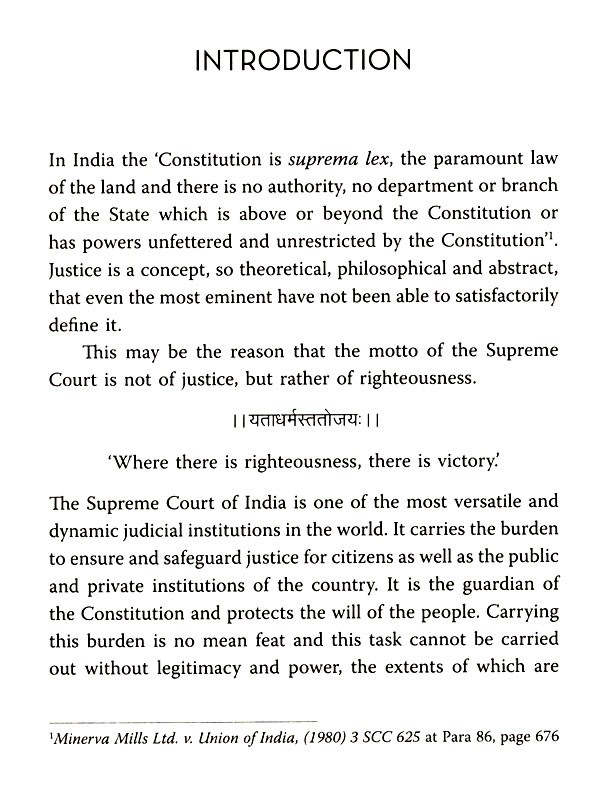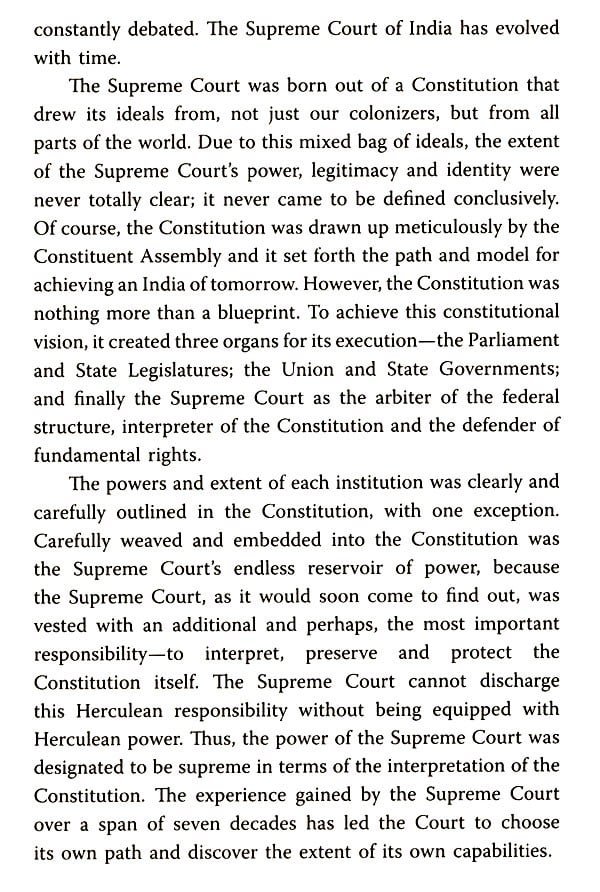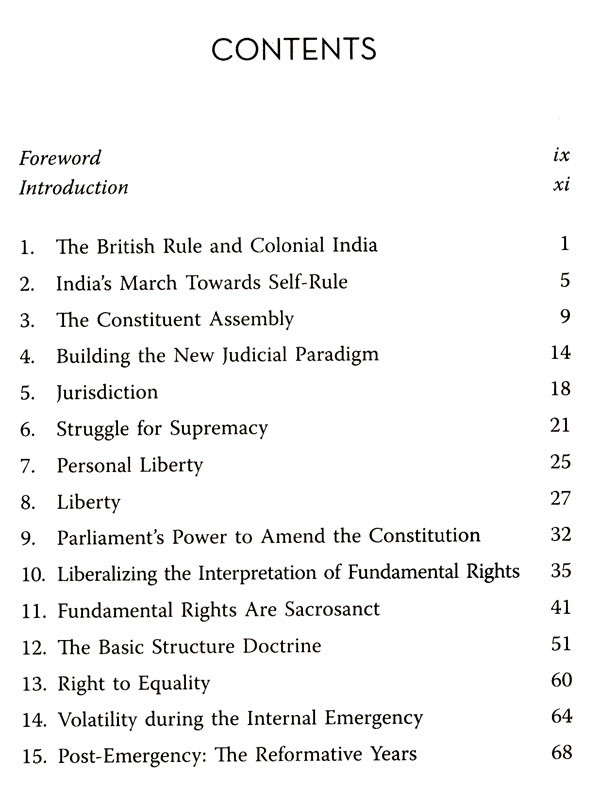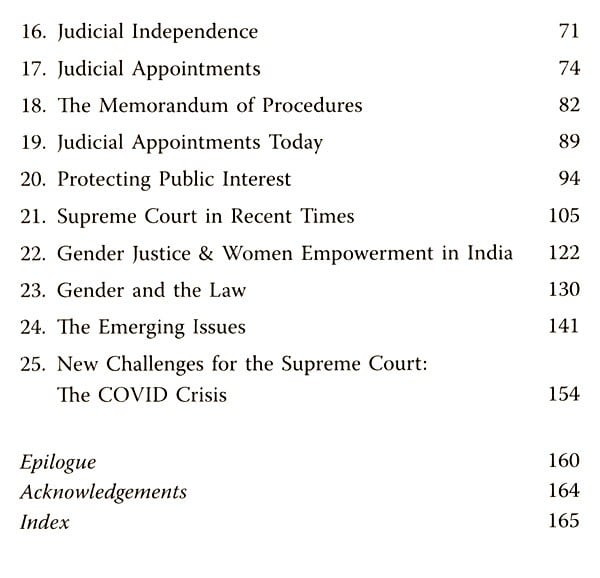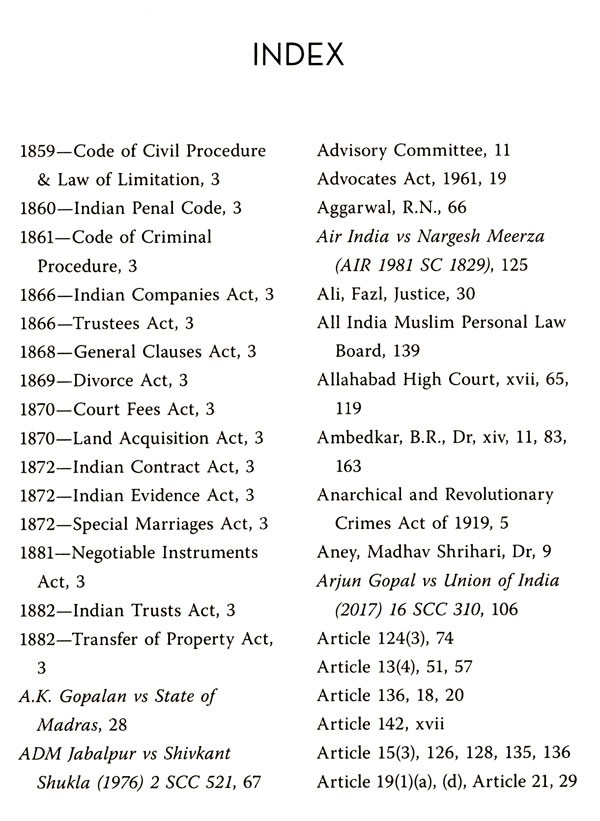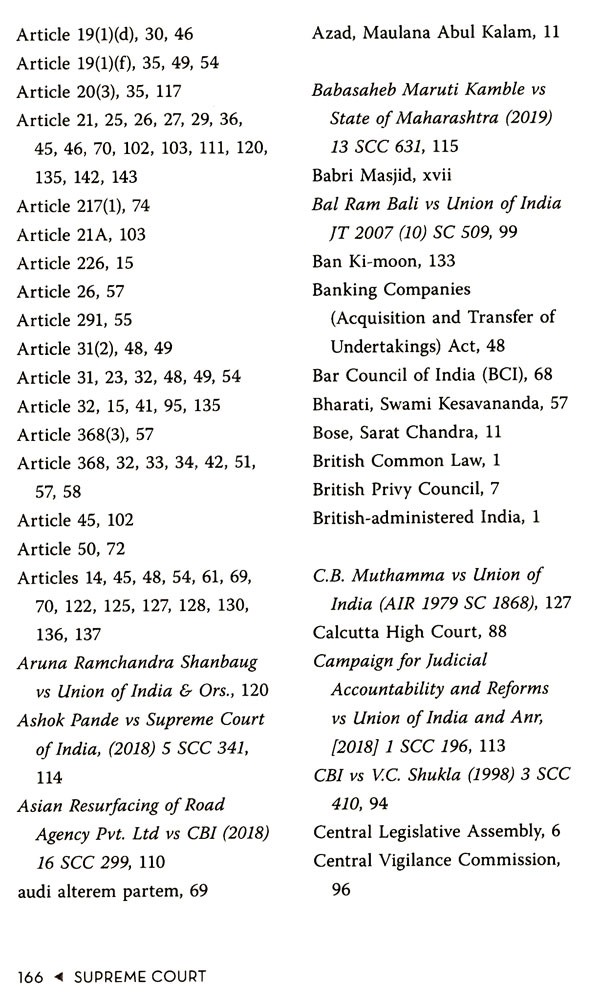
Institutions that Shaped Modern India- Supreme Court
Book Specification
| Item Code: | NBZ075 |
| Author: | Ashok Panda |
| Publisher: | Rupa Publication Pvt. Ltd. |
| Language: | ENGLISH |
| Edition: | 2021 |
| ISBN: | 9789390356881 |
| Pages: | 196 |
| Cover: | HARDCOVER |
| Other Details | 8.00 X 5.50 inch |
| Weight | 250 gm |
Book Description
The end of colonial rule was an important milestone worth celebrating, but what lay ahead was a long journey towards the making of modern India. The narrative of modern India' would be incomplete without the stories of institutions that helped shape India as we know it today.
Well-known advocate Ashok Panda traces the evolution of the Supreme Court of India. The guardian of the Indian Constitution and the defender of our fundamental rights, the Supreme Court has had to fight hard to ensure that the Indian State fulfils its duty to take care of the last man standing and to protect the basic features of our Constitution.
Since the very beginning, the Court has dealt with numerous complex issues borne out of India's fast-changing social, cultural and political landscape. Through several landmark judicial pronouncements, the Court created the path of not just governance but also reformed laws dating back to the British era. The Supreme Court is truly the country's conscience keeper.
Ashok Panda is a practising Senior Advocate in the Supreme Court and was a close associate of Justice V.M. Tarkunde. Having witnessed most of the defining moments in the history of the Supreme Court of India, he is uniquely placed to write this book. He has been part of the human rights movement since the mid-70s. Along with the late Ashok Srivastava, he was appointed Court Commissioner in the famous Bandhua Mukti Morcha case by the Supreme Court. He has also assisted the Supreme Court in the Jain Hawala Case.
The Supreme Court of India is an institution of which every Indian can be legitimately proud. It has enforced the Rule of Law and upheld constitutional values and struck down exercise of arbitrary power. More significantly, it has evolved constitutional rights and freedoms not expressly mentioned in the constitutional guarantees. The right to privacy is one such illustration.
The most striking feature of the Supreme Court has been the evolution of the basic structure doctrine, according to which the power of amendment, however wide and extensive, cannot be utilized to change the basic features of the Constitution. For example, secularism is a basic feature of the Constitution. Parliament cannot by constitutional amendment abrogate it. Again, freedom of religion is also a basic feature. Federalism is another basic feature. These features cannot be abrogated because according to the Supreme Court, the same constitute the basic structure of the Constitution and thus, are beyond the power of amendment.
A fierce controversy erupted after the Supreme Court judgment on its basic structure theory. Critics denounced it as an unwarranted assertion of judicial supremacy over other institutions, namely Parliament and State legislatures.
**Contents and Sample Pages**